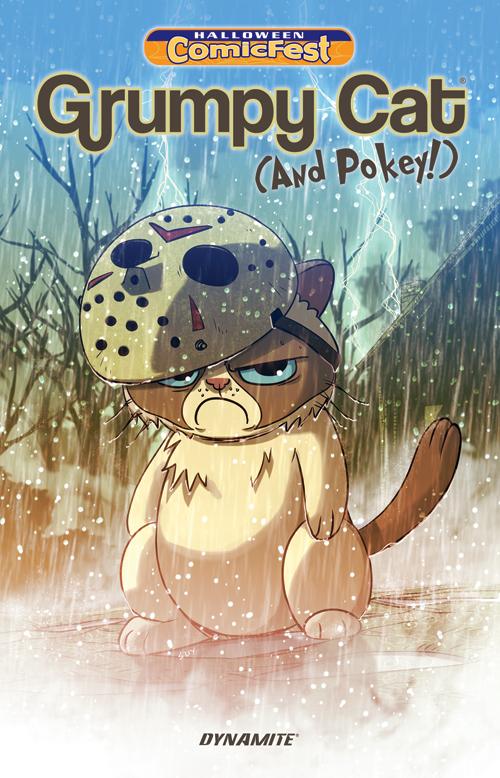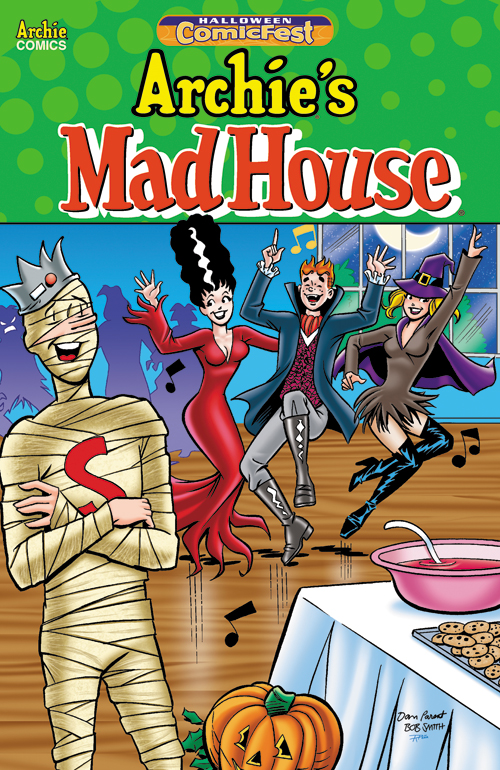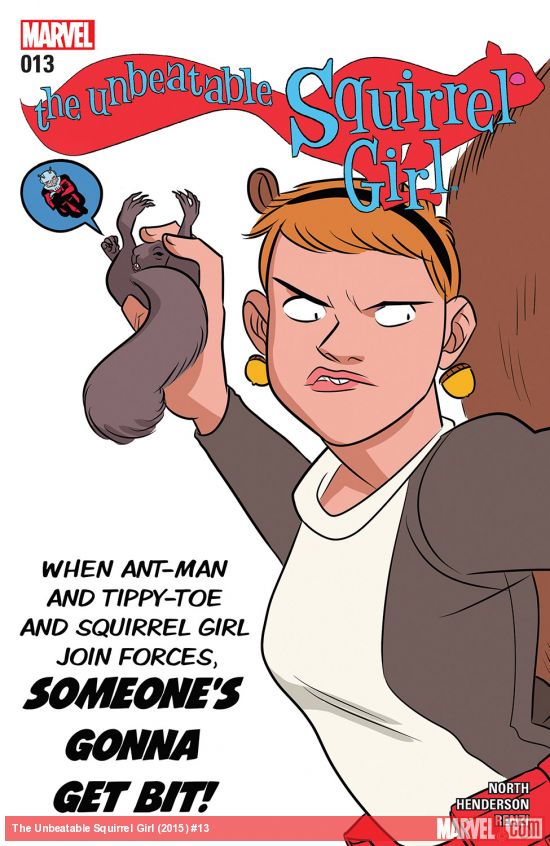I feel like I should preface any list of "Best" cult films or "Most Important" cult films with the disclaimer that there is no list. The thing that makes cult films memorable is that they are a representation of a unique voice, and different voices appeal to different people. Plus, there are just so, so many movies out there, nobody can see them all. If you've got a film that you (or you and your friends) love and quote and everybody else thinks you're nuts, I think you're doing the thing right, and it doesn't matter if that movie's on a list anywhere or not.
The other key thing about cult films is that they are usually produced outside of the mainstream, so a lot of lists of "Best Cult Films" that I see online are rehashes of movies like
The Big Lebowski or
Office Space, which were box office flops, but gained a second life through word-of-mouth after their disappointing theatrical runs. I love both of those movies, and they certainly have cult followings —
Office Space prompted Swingline to actually make a red stapler, and
The Big Lebowski started a religion — but now they're so well-known I don't need to invoke them here.
Since I get to make this list, I wanted to focus on movies that didn't show up on the other lists. I also wanted to stay away from "The Worst Movie Ever" kinds of films (plus,
I already covered that ground), and try to share movies that I think are legitimately good, or moving, or compelling, even if you can see their seams sometimes.
These are in no particular order, but they are all perfect for late nights or rainy days:
1. Carnival of Souls
After a traumatic accident, a woman becomes drawn to a mysterious abandoned carnival. - IMDb
Mistakenly thought to be in the public domain for decades and widely available in grainy, garbled versions,
Carnival of Souls has a new blu-ray release from Criterion with restored picture and sound that really shows off this movie for what it is. It's a legitimately eerie movie, beautifully shot, full of evocative imagery and intelligent subtext. This movie also has special significance for me, because seeing the original Criterion Collection release of this movie alongside films by Renoir, Godard, Kurosawa, and Bergman was the first time I really understood that cult films didn't have to be a guilty pleasure. That release made me realize that there were other people like me who loved both art house cinema and outsider cinema and took them equally seriously.
2. Chimes at Midnight
The career of Shakespeare's Sir John Falstaff as roistering companion to young Prince Hal, circa 1400-1413. - IMDb
For many years, the crown jewel of my DVD collection has been a DVD-R of this movie, which was only briefly released on VHS and was extremely difficult to find and even more difficult to own. But this is another movie that Criterion has recently rescued from the pit of abysmal picture and sound quality. And good thing, too. This movie and the never-completed
Don Quixote were Orson Welles' dream projects. Constructed from texts pulled from four Shakespeare plays, Welles made John Falstaff, who has more lines than any other character in Shakespeare, the tragic hero of his own movie. The larger-than-life Welles plays the larger than life mentor to Prince Hal, later King Henry, and the thread of wasted talent and unbridled excess that runs through the film cannot help but reflect on the former boy-wonder of Welles himself. It is a movie that was financially and logistically hard to make and it shows, but it is full of stunning images, and a truly heart-rending conclusion.
3. A Bucket of Blood
A frustrated and talentless artist finds acclaim for a plaster covered dead cat that is mistaken as a skillful statuette. Soon the desire for more praise leads to an increasingly deadly series of works. - IMDb
I will go to the mat with anybody who says Roger Corman isn't a good director.
He's certainly known as a producer of exploitation films and for launching the careers of people who went on to be iconic directors, but his directorial work (which he pretty much stopped doing in the late-1970s) was extremely sharp, both in terms of visual style and intelligence.
A Bucket of Blood is one of the best satirical take-downs of the art scene I think I've ever watched, and it wraps it inside the costume of a schlocky horror movie. It's funny, full of gentle social commentary, and has just enough of an "ick" factor to create some intentionally cringe-worthy moments. If you've ever wanted to see the Beat Generation get some comeuppance, this one's for you.
4. Faster Pussycat, Kill Kill
Three go-go dancers holding a young girl hostage come across a crippled old man living with his two sons in the desert. After learning he's hiding a sum of cash around, the women start scheming on him. - IMDb
I'm much more of a Corman guy than a Russ Meyer guy, but when it comes to exploitation films, you have to give Russ Meyer his due. Meyer is most closely associated with busty women with quick tops, but there's actually no nudity in this, his best-known movie. Busty women, sure, and car races, and inexplicable danger aplenty. This movie is also notable for being the source of most of the movie dialogue samples used in White Zombie's breakout album
La Sexorcisto: Devil Music, Vol. 1. That's actually what got me to watch this movie in the first place.
5. Blacula
An ancient African prince, turned into a vampire by Dracula himself, finds himself in modern Los Angeles. - IMDb
There are a lot of 1970s blaxploitation movies you can watch and have a pretty great time with, but the thing I love about
Blacula is how William Marshall's performance really elevates this movie way past what you think it would be from the amazingly schlocky title. He was primarily a Shakespearean actor, plays the character of Prince Mamuwalde totally straight, and sells it. This movie is at its heart a love story, and despite some *ahem* lines that ring out particularly jarringly to modern sensibilities, the performances in this movie should earn it far more prominence among horror fans than I think it currently has.
6. Killer of Sheep
Stan works in drudgery at a slaughterhouse. His personal life is drab. Dissatisfaction and ennui keep him unresponsive to the needs of his adoring wife, and he must struggle against influences which would dishonor and endanger him and his family. - IMDb
This underground film shot in south Los Angeles in the early 1970s is not to be confused with a blaxploitation film. This is a poetic and deeply touching movie that went unseen for over two decades because of rights clearance issues with the music in the film. The picture of daily life in Watts that it shows is both stifling but also affirming and moving. When it was added to the National Film Registry in 1990, that helped raise awareness for the movie, and ultimately led to a limited theatrical release in 2007. It is now available on DVD.
7. I Bury the Living
Cemetery director Robert Kraft discovers that by arbitrarily changing the status of plots from empty to occupied on the planogram causes the death of the plots' owners. - IMDb
I came across this one on a Public Domain movies site years ago, and I was pleasantly surprised. What the description here doesn't include is that the director doesn't want to be killing people, and begins thinking that he's descending into madness. As this starts to happen, there are a couple of visual effects sequences that are really striking, and take on the air of a twisted re-imagining of Fitzgerald's "eyes of Dr. T.J. Eckelburg." The film suffers a little from a Scooby-Doo ending, but there are rumors that there was a different ending originally shot. That's going to have to be one for the angels, though, because in 1958 nobody was keeping alternate endings of B-pictures around for archivists to find later.
8. Billy the Kid vs. Dracula
Dracula travels to the American West, intent on making a beautiful ranch owner his next victim. Her fiance, outlaw Billy the Kid, finds out about it and rushes to save her. - IMDb
I reviewed this movie before, and you can
read that at your leisure, but for our purposes here I will simply quote one line of that review: "At some point in 1965 or '66, some actual human being must have had this thought: 'Let's get John Carradine to play a vampire again, but this time we'll stick him in the Old West, name the movie after two characters not actually appearing in the movie, and shoot the thing for a nickel in, say, my back yard in Encino!'" The IMDb description is actually not correct: Carradine is never identified as Dracula because they didn't want Universal suing them, and "Billy" in the film did not have a previous career as a notorious outlaw. So if this sounds like it's up your alley, it probably is. If it doesn't, man, you've been warned.
9. Plan 9 from Outer Space
Aliens resurrect dead humans as zombies and vampires to stop humanity from creating the Solaranite (a sort of sun-driven bomb). - IMDb
This is also an objectively bad movie, but Edward D. Wood Jr. deserves a place on this list if for no other reason than that
Ed Wood is maybe the greatest movie ever made about movies.
Plan 9 is also, and I don't know anybody who would argue with me on this, the closest Ed Wood ever got to making a decent movie. The idea of a bomb made out of the sun's rays is not the worst sci-fi idea ever, and the story is more or less coherent. As opposed to, say,
Glen, or Glenda?. Plus, the reach of this movie has been remarkable, from the Tim Burton biopic to the name of Glenn Danzig's record label, so it's worth watching if you haven't actually seen it. May I recommend watching
Ed Wood and then
Plan 9 as a double-feature?
10. Primer
Four friends/fledgling entrepreneurs, knowing that there's something bigger and more innovative than the different error-checking devices they've built, wrestle over their new invention. - IMDb
Of course, if you'd actually like to see a good sci-fi movie made for no money, you might want to skip ahead a few decades to
Primer. This movie has a reputation for being quite a mind-bender of a time-travel movie, and it does not disappoint. I would argue that only with (many) multiple viewings and some graph paper could you actually untangle what's happening in all the different timelines, but at a certain point, it doesn't matter. The storytelling is dizzyingly complex, but you get the impression director Shane Carruth knows what's going on, and that he's going to take you somewhere worthwhile, so you go along. It's a tense and confusing ride, but I'm not aware of another movie like it. I actually prefer Carruth's poetic, disjointed follow-up
Upstream Color, but start here.
11. It's Such a Beautiful Day
Bill struggles to put together his shattered psyche, in this new feature film version of Don Hertzfeldt's animated short film trilogy. - IMDb
As long as we're talking about bending minds, let's also dip our toes into the animation end of the pool. Don Hertzfeldt bends minds with the best of them, and I am truly at a loss as to how he is able to tell such elliptical stories with stick figures and still elicit powerful emotional responses from me. I am a big fan of Don Hertzfeldt, and this re-packaged collection of three of his related short films is a perfect example of why. Bill seems to be emotionally falling apart, but then it seems like he's actually mentally falling apart. His journey yo-yo'ing closer to and farther away from "sanity" and "reality" is both tremendously imaginative and tremendously moving. Hertzfeldt's
World of Tomorrow short film was absolutely robbed of an Oscar, too, for whatever that's worth.
12. Sita Sings the Blues
An animated version of the epic Indian tale of Ramayana set to the 1920s jazz vocals of Annette Hanshaw. - IMDb
Animator Nina Paley made this animated feature film on her own. By herself. Alone. Feature film. Bill Plympton does the same kind of thing, and I am simply in awe of these artists. Paley's movie tells the story of Sita and her lover Rama from the Hindu epic Ramayana, and intertwines that tale with the story of the dissolution of Paley's own marriage. It's simply a beautiful, enthralling piece of work that not only explodes with imagination, but is full of beautiful visual design, too. It blurs the line between myth, fiction, and documentary, and is set entirely to torch songs. What's not to love?
13. The Beaver Trilogy
It begins in 1979 with the chance meeting in a Salt Lake City parking lot where filmmaker Trent Harris is approached by an earnest small-town dreamer from Beaver, Utah. - IMDb
And speaking of blurring lines...man, this one's something. As quick as I can tell it: Trent Harris was working at a TV station in Utah when they got their first video camera, and he was testing it in the parking lot when a guy called "Groovin' Gary" spotted him and came over.Gary always wanted to be on TV, and had his car adorned with images of Olivia Newton-John. He invited Harris back to Beaver for a talent show that Gary wanted recorded. In it, Gary dressed in drag and performed *as* Olivia Newton-John, to the befuddlement and ridicule of the small, conservative town. That really happened. A couple of years later, Harris moved to LA, and fictionalized the story a bit, and shot it as a short film with a pre-
Fast Times Sean Penn. A couple of years later, while at USC film school, he made another go at the same story with a pre-
Back to the Future Crispin Glover. If you can't find this amazing, unique gem, track down the new documentary
The Beaver Trilogy, Part IV, which tells the whole story in stunning fashion.
14.
The Sid Saga
Spurred by house guests Bob Sandstrom and Karlene Sandstrom leafing through his scrap book and asking about photographs in it, Sid Laverents begins to tell his life story. - IMDb
This is simply one of the crown jewels of amateur cinema. I don't know how to find it, except UCLA shows it sometimes and it occasionally airs as part of the sporadic TCM Underground series. But it is truly unforgettable, with Sid Laverents taking viewers through a stunning, three-part filmic biography that not only tells the story of Laverents, but of 20th Century America, too. It begins in poverty and vaudeville, goes through World War II, the 1950s and Cold War, the aerospace boom and introduction of the space program, and finally the rise of amateur film and videography that put storytelling tools into the hands of everyday people. And it's all told first-hand from Laverents, who lived it all. I reviewed this film a couple of years ago, and it is absolutely worth tracking down.
15. Head
The Monkees are tossed about in a psychedelic, surrealist, plotless, circular bit of fun fluff. - IMDb
Whoever wrote this IMDb summary can suck it. This is anything but "fan fluff." This is the weirdest damn thing, and as far from the Monkees TV show as I can really imagine. It's a smart, self-indulgent, self-reflexive piece of meta-storytelling made by Jack Nicholson and Bob Rafelson, who would immediately after this project go on to collaborate on
Five Easy Pieces, with Nicholson exploding into the mainstream world in
Easy Rider in between. The Monkees got a bad rap at the time, and I think it persists, that they were just a slapped-together attempt by a record company to make an American version of the Beatles. That may have been their genesis, but their songs are great, the guys were interested in things beyond the show, which came through in songs like "Randy Souse Git" and this film, which was reportedly the first time Americans had seen the now-famous footage of the South Vietnamese Chief of Police executing a handcuffed Viet Cong prisoner. Fan fluff, right? This was Tor Johnson's final film, and also, in a restroom, Peter Tork gives Davy Jones the advice that, "Nobody ever lends money to a man with a sense of humor."
16. The X from Outer Space
The spaceship AAB-Gamma is dispatched from FAFC headquarters in Japan to make a landing on the planet Mars and investigate reports of UFOs in the area. - IMDb
In the 1960s, the Shochiku studio in Japan, which was known for more serious, art-house films like those of Yashujiro Ozu, decided it wanted to get in on some of that sweet Godzilla money that Toho was pulling down, and this film was their attempt. In it, some swinging astronauts jet back and forth between Earth, the moon, and Mars for reasons that are clear, but don't make any logical sense. While exploring, they get some goo on the ship, which hatches into a giant space chicken called Guilala. The English dub of this movie is legitimately terrible, but the original Japanese version, subtitled, is wonderful. It is everything I love about silly, 1960s monster movies, and may even exceed some of the Godzilla movies with shady aliens in them.
17. Suspiria
A newcomer to a fancy ballet academy gradually comes to realize that the school is a front for something far more sinister and supernatural amidst a series of grisly murders. - IMDb
This movie, by Italian horror icon Dario Argento (who also co-wrote the unmatched
Once Upon a Time in the West), is the real deal. It's creepy, scary, grisly, bloody, mysterious, and atmospheric. It hits all of my favorite notes of horror movies, and has an ending that is serious nightmare fuel. Emerging from the
giallo scene in Italy, it took things a step farther, and is really not for the faint of heart. But man, this is such a great horror movie. I've written before about
the line that connects certain films between the 1950s and early 60s, ultimately resulting in
Rosemary's Baby, and I think
Rosemary in turn made
Suspiria possible.
18. Bay of Blood
An elderly heiress is killed by her husband who wants control of her fortunes. What ensues is an all-out murder spree as relatives and friends attempt to reduce the inheritance playing field, complicated by some teenagers who decide to camp out in a dilapidated building on the estate. - IMDb
Staying in Italy with a
giallo contemporary of Argento's, we have Mario Bava's
Bay of Blood. Bava was making his mark a decade before Argento hit the scene, so a lot of what Argento would build on
came from Bava. And it goes way beyond that. Because
Bay of Blood is not a "proto-slasher" movie, it is a full-bore, perfect example of a slasher movie, made almost a decade before slasher movies were a thing. You could pretty much take the cliched rules laid out in
Scream that govern slasher movies and apply them one-for-one to this movie, but if that's the case, that means this movie invented those rules. I don't know if American filmmakers in the early 1980s looked at this movie and drew inspiration, or if Bava was simply ahead of his time, but this movie is about as good as straight slashers get, and it accomplished that while creating the lexicon, so I think that's one hell of an achievement.
19.
The Wicker Man
A police sergeant is sent to a Scottish island village in search of a missing girl whom the townsfolk claim never existed. Stranger still are the rites that take place there. - IMDb
When I was in college and found 1) the Internet and 2) a pair of amazing video stores near my dorm, I spent some time combing a bunch of lists to find movies to rent.
The Wicker Man consistently showed up on lists of "the scariest movies ever made" and that sort. So I rented it and I thought it was stupid. But I just sort of missed it — there's something sticky about this movie. Even though I didn't think I liked it, something made me want to revisit it, and when I did, a switch flipped and I fell in love with this movie about the collision of modern life, Christianity, and very, very old pagan beliefs that have still never really gone away. It's a movie with a lot going on under the surface, and which was also plagued for decades with a "the movie that could've been" legend that told the tale of how we never got to see the director's real vision of the movie. That has since been solved, despite the original camera negatives being used as fill underneath the M1 motorway connecting London to Leeds. And for what it's worth, my copy of
The Wicker Man DVD actually came in a wicker box.
20.
Equinox
Four friends are attacked by a demon while on a picnic, due to possession of a tome of mystic information. Told in flashbacks by the sole survivor. - IMDb
To be honest, this movie is mostly remarkable because of the people that worked on it. As a film on its own, it's only ok, and the present-day framing device of a police detective interviewing a survivor of all that went down is...clumsy at best. So you've really got to have some patience to get to where the movie begins to cook. This film was created by friends who met through Forest J. Ackerman (Uncle Forry), who founded
Famous Monsters of Filmland in Los Angeles, and decided to make their own film. These friends, including Jack Woods and Dennis Muren, went on to become transformational figures in Hollywood through their contribution to sound and visual effects. It's truly remarkable to see their first film, knowing that they went on to redefine the modern cinematic language. No hyperbole. There are entire passages of
The Evil Dead and
Evil Dead 2 that are cribbed directly from this film, and while the humans-talking-to-each-other portion of the movie is clunky, the finale, made from stop-motion, rotoscoping, and glass mattes, is legitimately badass.
21. Incubus
On a strange island inhabited by demons and spirits, a man battles the forces of evil. - IMDb
You notice how vague the plot summary for this movie is? That's about right. I mean, what I remember from this movie is William Shatner and some girl hiding in a barn, and then I think they ran for a bit...and maybe one of them was briefly possessed, but I couldn't swear to that. This movie is totally forgettable except for one kinda important thing: it was spoken entirely in Esperanto. You know what Esperanto is, right? It's an invented language that blends elements of the Romance languages, English, and probably a few other languages into what was hoped to be a universal language. Created in the 1880s, it took almost 100 years to make a movie in the language, and that was
Incubus. So if you want to watch a movie where Bill Shatner speaks a made-up language, this is your only option, folks. Who gives a shit if it is entirely, and utterly, forgettable otherwise? But look: I have friends who have learned Swedish to watch Bergman movies in the native language, and friends who have learned Japanese to watch anime in its native language (I have undeniably awesome friends), so if you want to be able to turn the subtitles off in
Incubus, you can currently learn Esperanto in the free language-learning app Duolingo on your phone.
22.
Venus in Furs
A musician finds the corpse of a beautiful woman on the beach. The woman returns from the dead to take revenge on the group of wealthy sadists responsible for her death. - IMDb
This is definitely an outsider kind of film. I haven't seen any other of Jesus "Jess" Franco's films, but from what I know, a number of his films have veered into the more hardcore elements of mixing sex and cinema.
Venus in Furs certainly has sex and nudity, but what it has more of, and in spades, is atmosphere and intrigue. The story is told through the eyes of Jimmy, a jazz musician, who sees a beautiful girl at a swanky party, then finds her merdered body on the beach, then sees her again, walking around. There's a wonderful current of
I Spit on Your Grave-style cosmic retribution for sexual violence that runs through the movie, but mainly it's just sort of out-there and entrancing. Like the jazz musician at the center of the movie, you're never quite sure what's going on, and you're kind of ok with that because it's a unique ride you want to get to the end of.
23. The Masque of the Red Death
A European prince terrorizes the local peasantry while using his castle as a refuge against the "Red Death" plague that stalks the land. - IMDb
To be honest, I didn't realize this was my favorite of the
Roger Corman/Vincent Price/Edgar Allan Poe movies until I
wrote songs about a bunch of horror movies, and the one I wrote for this one turned out to be my favorite. Like in
Bucket of Blood above where Roger Corman is a good director, and in
Blacula where performances can elevate an otherwise straight exploitation film, for me Hazel Court makes this movie. There are a number of wonderful things in this one, from the dwarf circus performer who murders a friend of Prince Prospero (Vincent Price) to avenge an insult to a girl he loves, to the amazing set design that was the apotheosis of the Corman/Price/Poe look, that if I have to let this one movie stand in for all the wonderful films in this series of movies, I'm happy to do so. If you can only watch one Roger Corman movie this Halloween season, I recommend this one.
24. Perversion for Profit
This anti-porn short film shows a flood tide of filth engulfing the country in the form of newsstand obscenity. - IMDb
This is maybe a bit of a cheat. This isn't a narrative film or documentary, but I guess you could say it's a sort of outsider cinema. This instructional film was created in 1965 to warn America of the dangers of the secret filth hiding in the newsstands in the form of comics, men's, and women's magazines. This film is amazing in many ways. There's the slice-of-life sense of giving the modern-day viewer a picture of what life was like in the mid-1960s, and what people could see walking into the corner drug for a magazine, but mainly it's a totally un-self aware look at the hypocrisy of the morality police. The fact is that this movie is a half-hour of words talking about how terrible the "smut" problem is in America, while showing the "smut" in question in full detail. There are very tiny black bars over nipples or eyes, but it's clear to see that this film became, in a sense, exactly what it beheld. By damning pictures of nude women while showing pictures of nude women, today this seems like a way to get soft-core porn into the hands of moral crusaders who could only enjoy nude bodies if they felt they were also condemning them. This movie is a really interesting artifact that says a lot more about the people who made and watched it than it does about they people they were trying to denigrate. It's a fascinating time-capsule that conveys a very different message these days than it was originally meant to.
Posted by Vance K — Emmy-winning producer, folk musician, and cult film reviewer and co-editor of nerds of a feather, flock together
since 2012.











































